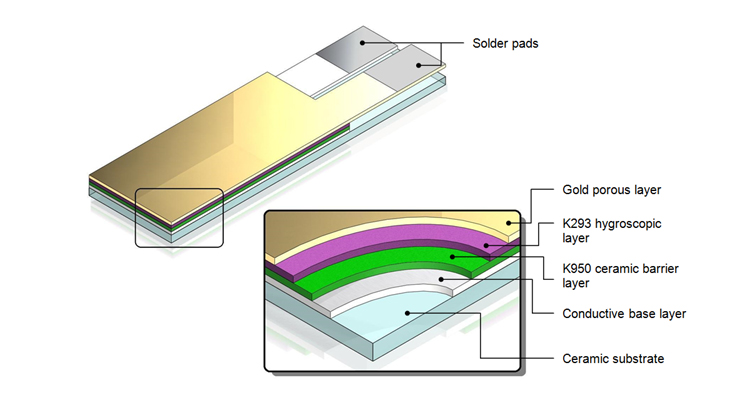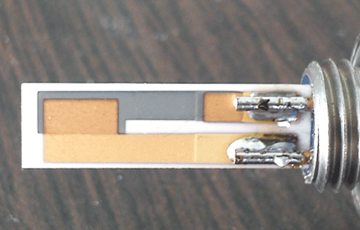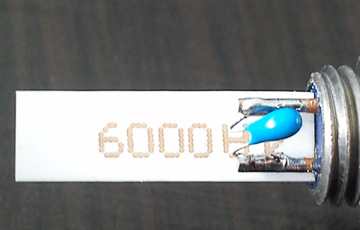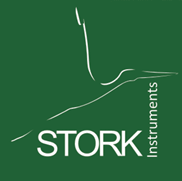Developed by our own engineering laboratory, the bi-ceramic sensor is used in our DEWCom loop powered dewpoint transmitters and the DEWRanger portable instrument. The STORK bi-ceramic sensor represents a major technological advance in the humidity measurement instruments - moisture meters in air. It employs two specially developed low temperature co-fired ceramics (LTCC), designated by our engineers as K950 and K263, to create a sensor with a very fast response time and high stability. A layer of the ceramic K950, with a thickness of 10 nanometers, is deposited to create an electrical insulation barrier with a DC resistance in excess of 2 mega-ohms which protects the sensor from short circuit faults. This is co-fired with an ultra thin response layer only 24 nanometers thick of the ceramic K263, which is highly hygroscopic and responds rapidly to changes of water vapor pressure by changes in its impedance. It is the K950 barrier layer which has given our engineers the freedom to reduce the thickness of the response layer to a minimum. It means that that water vapor exchange with the response layer is much faster than with earlier sensors.

 |
 |
|
How is the Stork Bi-Ceramic sensor different from sensors made by our competitors?
For many years impedance humidity sensors have employed either aluminum oxide or polymers to create the active impedance layers. Polymers do not provide the necessary sensitivity to make them suitable for low level humidity measurements. Sensors in which the response layer is made from aluminum oxide (sometimes called ceramic sensors), are made by anodizing aluminum, which creates a response layer with a thickness of about 1000 nanometers. A thinner layer than this cannot be made using this process without reducing the thickness of the electrical barrier layer to a level which risks electrical short circuits during the sensor's operation. The 1000 nanometer thick response layer is therefore a factor limiting performance in sensors produced by rival manufacturers. It means that response time, particularly in the low humidity regions is very long. A second disadvantage of this type of sensor is that aluminum oxide undergoes a slow conversion process over time to aluminum hydroxide and this manifests itself as calibration drift, which means that this type of sensor requires re-calibration at frequent intervals. |
